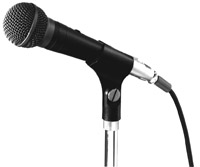Libraries at University of Nebraska-Lincoln
ORCID IDs
Date of this Version
4-8-2014
Document Type
Article
Citation
Proposal submitted to Open Repositories 2014 conference (Helsinki, June 9-13, 2014) on Feb. 10, 2014, and notification of acceptance email, with referees' reports, received Apr. 7, 2014.
Abstract
The repository community has many organizations, experts, consultants, and “thought leaders” prepared to give direction and advice to the developers and managers of institutional repositories. This presentation is about how one repository (ours) has found success by rejecting much of their “conventional” wisdom and “expert” advice. We have declined to support the SPARC Addendum, promote campus mandates, encourage Creative Commons licensing, use open-source software, rely on faculty self-archiving, or require peer-review for original publishing; and we are not even considered truly “open” access by SPARC or the hard-line “libre” adherents.
Yet we are the second-largest U.S. institutional repository, with more than 70,000 full-text documents available. We experience 7.5 million hits and furnish 6 million downloads annually. Our content ranks higher than Elsevier’s and Springer’s in Google search results. We enjoy a high degree of faculty participation and an exceptional level of return “business.” Our repository accounts for 10%–12% of all daily university website traffic.
We are a medium-size public university (25,000 students, 1,500 faculty) in a predominantly agricultural state (beef, corn, & soybeans), without a library school or a medical college. We have used third-party software and developed a variety of innovative service practices to win the hearts and minds of our campus community and attract users throughout the world. These practices include mediated deposit, delegated hunting and gathering, typesetting and formatting post-prints to match published versions for layout, pagination, etc., assistance with PubMed Central deposits, original and reprint monograph publishing, and the aggressive application of U.S. copyright rules on eligibility and the public domain.


Comments
Portions copyright (c) 2014 Paul Royster. Non-commercial re-use permitted.